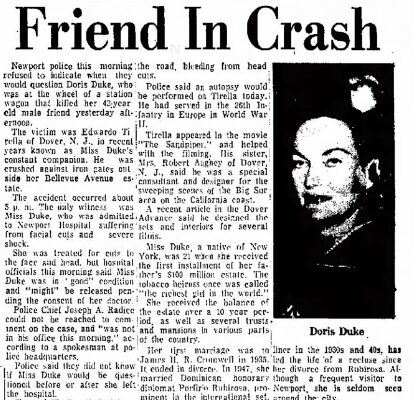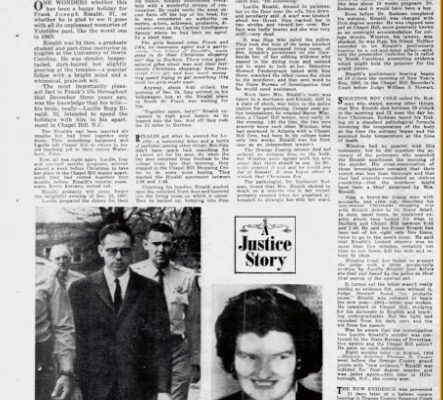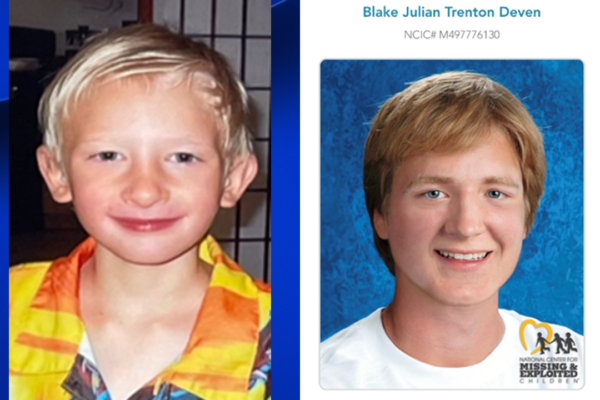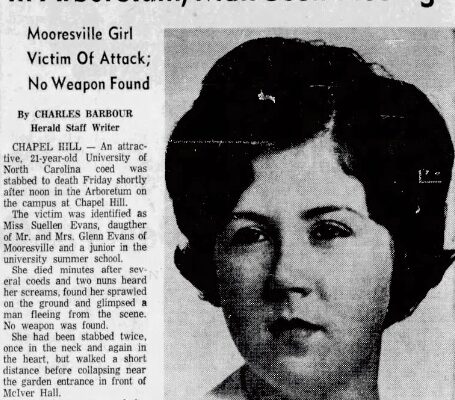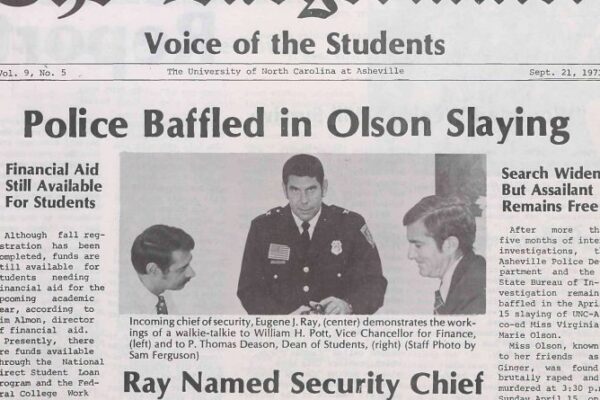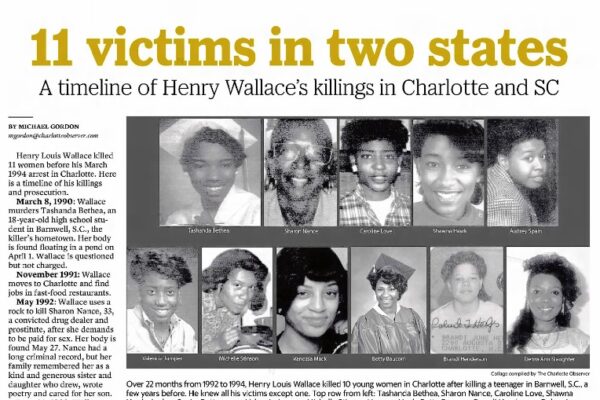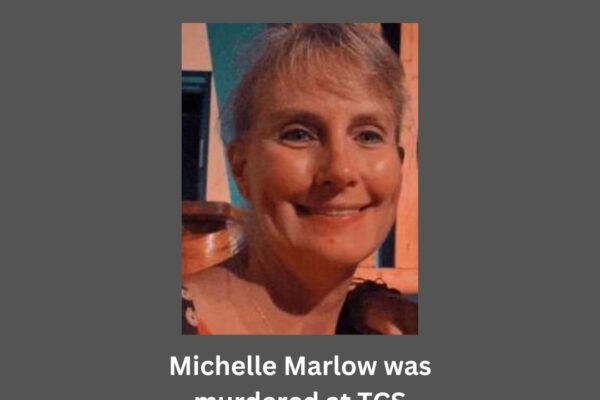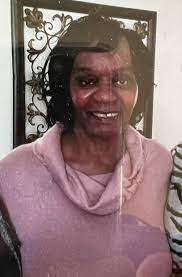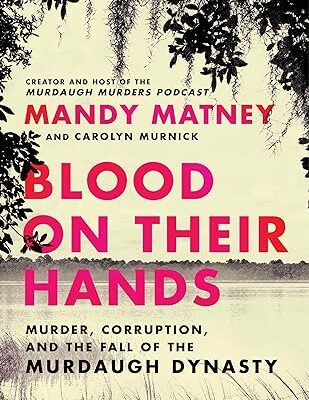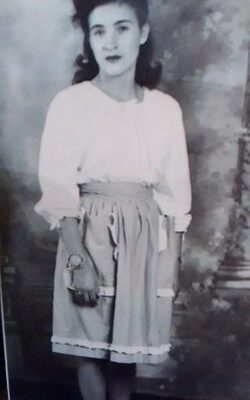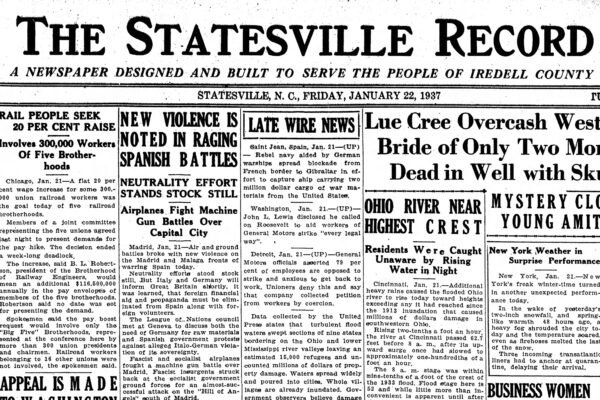Today I’m talking about a few different true crime documentaries and series that I think fans of this podcast would enjoy. I tried to make selections from a few different streaming services, since I know most of us don’t have access to everything available. I’ll be discussing the Hulu series “The Lesson is Murder,” the Netflix documentary “American Nightmare,” and the Max documentary “They Called Him Mostly Harmless.”
The Lesson is Murder
I’ll start off with “The Lesson is Murder,” since it first aired this past spring. I only recently discovered it as I was searching the true crime category on the streaming service. I think true crime fans interested in the psychological profiles of criminals will find it enlightening. The show features three episodes, and is centered around a retired FBI agent and psychological criminologist Dr. Bryanna Fox, who also works as an associate professor at the University of South Florida. In the show, she works with a team of graduate students specializing in different crime-related fields to analyze convicted murderers’ personality traits as a way to develop psychological profiles.
Fox told the University of South Florida in a news release she got the idea for the show from a forensic psychology class she taught at USF in 2018. While she was teaching her students the fundamentals of psychological criminology, they applied what they learned to investigate a real cold case. She said the students ended up breaking open that cold case during the class.
The first episode features William Davis, a former nurse from Tyler, Texas who was convicted of killing four different patients by injecting air into their arterial systems. The second episode shares the story of a police officer in Texas named Robert Fratta, convicted in orchestrating the murder of his estranged wife Farah in 1994. Episode three profiles Ivie De Molina, a 27-year-old college recruiter turned sex worker and dominatrix who was arrested along with four other people for the murders of James Polites and Joseph Fiammetta in New Jersey and New York. In each episode, Fox and her team gather information from co-workers, acquaintances, family members of the criminal, and law enforcement. Once they analyze all the data and interviews, Fox goes to interview the convicted killer in prison. I like the way the show is formatted and shows the viewer how all the pieces of the puzzle come together, and the interviews give you real insight into the mind of a killer. I was surprised at how open and honest these interviews were, and if I’m to be frank, a little unnerving. For example, William Davis inadvertently admitted his guilt in a murder no one knew he had committed. Robert Fratta showed no remorse for his role in his crime, continued to deny his guilt, and had no problem demeaning his wife Farah and basically blaming her for own death. Ivie De Molina’s story explores how unprocessed sexual trauma from childhood led her down a dark path. Was it the cause of her becoming a murderer? I recommend checking out the series if criminal profiling is something you like studying.
American Nightmare
Next I want to talk about “American Nightmare,” streaming on Netflix. If you haven’t already watched it, here’s a spoiler alert that I’ll be talking about some of the major plot points from the documentary in this episode.
First off, I had never heard of this case before, so I’m thankful for the documentarians Felicity Morris and Bernadette Higgins (who also produced “The Tinder Swindler”) for shedding light on what happened to Denise Huskins and Aaron Quinn on March 23, 2015. Denise and Aaron, who both worked at the same hospital as physical therapists, were asleep at his home in Vallejo, California when they were awakened by a blinding light in the bedroom. Aaron later told police he could make out at least one person dressed in a wetsuit, calmly telling the couple that they were going to be part of a kidnapping and robbery. Aaron and Denise were bound and drugged with what appeared to be cold medicine. Aaron was told not to contact the police, and that the kidnappers would contact him later with the ransom demand. When Aaron awoke hours later, both Denise and his car were gone. Disoriented, and confused about what to do, he waited several hours before calling 911, which made the police suspicious. They immediately zeroed in on him as a suspect, believing he had done something to Denise, interrogating him for hours, even giving him a lie detector test, which they told him he failed. All the while they had seized his cell phone and missed two calls from the kidnappers with the ransom details.
At the same time, police had organized a massive search for Denise in the area near Aaron’s home. Dive teams and search dogs scoured the Mare Island Strait and continued through the night.
Denise had been transferred from Aaron’s car into another one and driven out of town to another location. Once she was returned to her hometown two days later after being subjected to a videotaped sexual assault more than once, she was petrified and afraid to talk to the police because the kidnapper had told her not to. Denise decided to consult with a lawyer after learning the police were skeptical of her story, and that’s when she was accused of orchestrating her own disappearance like the fictional character Amy Dunne in the 2014 David Fincher movie “Gone Girl.” “Gone Girl” was based on the book written by Gillian Flynn where a wife stages what looks like her own murder and disappearance in an attempt to frame her cheating husband. The plot twist was a shock to most people who read it, including myself, because the character of Amy Dunne is a very unreliable narrator, a fact you don’t realize until at least halfway through the book.
In fact, the Vallejo police spokesman Lt. Kenny Park told reporters, “Mr. Quinn and Ms. Huskins have plundered valuable resources away from our community and taken the focus away from the true victims of our community while instilling fear in our community members. We wasted all these resources on basically nothing.”
I went back into the newspaper archives from 2015 to get an idea of what the local California media was reporting, as this was discussed at length in the docuseries. Here is an article that ran in The Los Angeles Times on March 26, 2015. Ryan Parker and Veronica Rocha were the authors of this piece.
The headline was “Alleged kidnap was a hoax, cops say.” The text read:
The abduction of a 29-year-old woman in Vallejo was a hoax, police said Wednesday night.
Denise Huskins was reportedly kidnapped from her boyfriend’s home, held for ransom and found safe Wednesday, 420 miles south in Huntington Beach.
“Today, there is no evidence to support the claims that this was a stranger abduction at all,” authorities said in a statement Wednesday night. “Given the facts that have been presented thus far, this event appears to be an orchestrated event and not a crime.”
Initially, police believed Huskins was going to cooperate with their investigation and, with the FBI, arranged for a jet to fly her to Northern California for an interview, according to the statement.
But now, police have been unable to locate or contact Huskins or members of her family.
“Ms. Huskins has since retained an attorney and detectives are unaware of her location,” the statement said.
Huskins was found in “good condition” at a relative’s house in Huntington Beach, police Officer Jennifer Marlatt said.
Huskins told her father in a voicemail left Wednesday morning that she was at her mother’s house in Huntington Beach and walking to her uncle’s house nearby.
The message, according to her cousin Amy Mattison, said: Daddy, I’m OK. They dropped me off at Mom’s house but she’s not there so I’m walking to your house right now.”
Meanwhile, another tenant in the building called Mike Huskins to report that she was with him.
The neighbor told the woman’s father, “I’ve got her, I’m calling 911.”
Later Wednesday, the San Francisco Chronicle released an audio recording of a woman, identifying herself as Denise Huskins, who said she had been abducted.
“My name is Denise Huskins and I’m kidnapped, otherwise I’m fine,” the woman says calmly on the recording, which the Chronicle obtained Tuesday.
The woman established a time frame by referring to the deadly Gemanwings plane crash in the French Alps. She also provided personal details about herself.
Her boyfriend, Aaron Quinn, told police that Huskins was kidnapped early Monday and that a ransom demand was communicated during the abduction.
Huskins was allegedly abducted sometime between midnight and 5 a.m., but Quinn didn’t contact police until almost 2 p.m.
Quinn, 30, told police he saw her forcibly taken against her will from his home.
A car registered to Quinn was also taken but later found.
Just a few months after Denise and Aaron were vilified by the Vallejo police and the local media, a man arrested for a home invasion and attempted kidnapping in nearby Dublin, California was also discovered to be the mastermind behind Denise Huskins’ kidnapping.
“American Nightmare” is told through three separate 45-minute episodes. The first recounts the story from Aaron Quinn’s perspective. The second is Denise telling her side of what happened, including being accused of faking her own kidnapping by the police. And the third episode (spoiler alert here) details how the real kidnapper grew frustrated with the police’s treatment of Denise and contacted local reporters himself to tell HIS version of the events anonymously. I won’t share all the information about the kidnapper because it is covered in “American Nightmare,” but I will say I still have a lot of questions about this case. Aaron and Denise believe there was more than one kidnapper, even though only one person was arrested and charged. I tend to believe there was only one, based on some of the evidence that was found. I’m also curious as to why the kidnapper originally told Aaron their ransom target had been his ex-fiancee Andrea, who had previously lived with Aaron, and they decided to take Denise instead. And why was Denise returned safely despite there being no ransom delivered? Was the main motivation for the crime sexual assault and psychological manipulation?
One of the reasons I appreciated this documentary is because it highlights the issue that females are often accused of lying in the cases of kidnapping and sexual assault. They can be treated suspiciously by law enforcement and members of the media, and while there are a few bad apples out there, like Sherri Papini, who I’ll discuss next, and the recent case of Carlee Russell from Birmingham, Alabama, they are few and far between. I thought it was interesting that it even took a female police officer from another precinct to actually make the connections tying the man arrested for the attempted kidnapping to Denise’s case.
They Called Him Mostly Harmless
Next, I want to talk about the documentary, “They Called Him Mostly Harmless,” now showing on the Max streaming service. I wanted to watch this documentary because the story of an unidentified hiker found deceased in Florida several years ago caught my attention back in 2020, and I wrote a blog post on my website FinishedPages.com about the case. My follow-up blog post contained the man’s identity.
The documentary, “They Called Him Mostly Harmless,” directed by Patricia Gillespie, delves into the world of online sleuthing, which is how Vance Rodriguez eventually got his name back. But this world of amateur detectives, which I sometimes have mixed feelings about, is not without its drama. The documentary runs a little over 90 minutes long, and features interviews with two of the main women behind the online sleuthing efforts, the owners of the Othram genomics company, law enforcement from Collier County, and people who met “Most Harmless” along the Appalachian Trail, many of whom took photos with the elusive stranger.
Two of the online sleuths featured in this documentary are Christie Harris and Natasha Teasley. Christie began moderating a Facebook group about Mostly Harmless, and Natasha took over the group after dissension among the members caused Christie to leave the group. They both separately continued their investigation into the man’s identity, despite their disagreements. Natasha, who is from Durham, North Carolina, helped start a GoFundMe to help the Collier County Sheriff’s Department do the genetic testing on Mostly Harmless’s remains.
The director of this documentary really wanted to focus on the idea of how a community can help solve crimes, and I think that’s what makes this documentary stand out. First, you have the community of people who loves the outdoors, hiking, and disconnecting with nature. They embrace one another and find kinship in places like the Appalachian Trail. Then you have the true crime community who wants to find out the identity of person so they can get their name back and be returned to their loved ones.
Here’s what Patricia Gillespie told ABC News about her goal in creating this documentary. She said, “As a filmmaker, I tried to go in with questions rather than answers. But what started to emerge to me that was that to me, the real story wasn’t about the details of this private citizen who had unfortunately died under these mysterious circumstances. It was about who he became as sort of this cipher on the internet that all these people, the hikers, the sleuths poured an idea into. And it was usually an idea of him being who they needed him to be, or wanted him to be, or wished him to be. And we do that so much online.” Advances in technology and the use of the internet and social media have helped many unidentified people get their names back in recent years, and I think this documentary is a great example that it takes a village to do so.
Show Resources:
The Lesson is Murder
https://www.newsweek.com/robert-fratta-final-words-before-texas-execution-lethal-injection-1772848
American Nightmare
https://www.menshealth.com/entertainment/a46443089/american-nightmare-true-story-netflix/
https://time.com/6556061/american-nightmare-netflix-true-story/
March 26, 2015
The Los Angeles Times
Alleged kidnapping was a hoax, cops say
https://www.newspapers.com/image/203557484
The Los Angeles Times
September 15, 2015
Kidnapping victim seeks police apology
https://www.newspapers.com/image/203699509
They Called Him Mostly Harmless
https://www.huffpost.com/entry/mostly-harmless-true-crime-documentary_n_65c16f95e4b0dbc806adcd67




